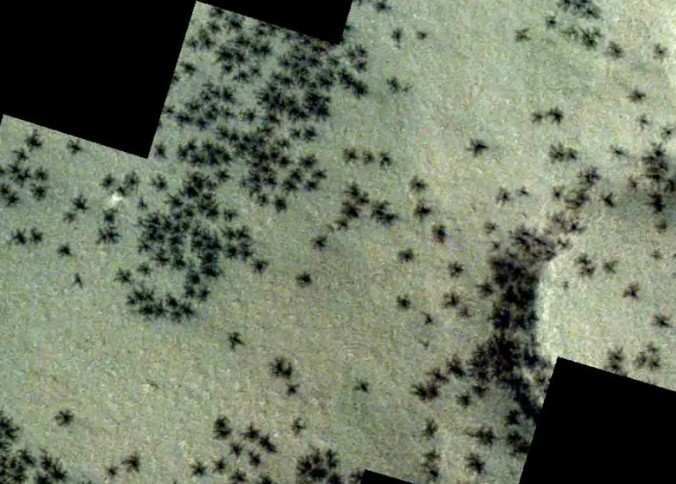(CNN) – A new study has revealed that Saturn’s iconic icy rings may cease to exist in the future for sky-gazers who view them through their telescopes.
A new analysis of data captured by NASA’s Cassini mission, which orbited the gas giant planet between 2004 and 2017, has revealed new insights into how long the rings have existed and when they might fade from view. The results were shared in three studies published in May.
Our solar system and its planets formed about 4.6 billion years ago, and scientists have long debated the age and origin of Saturn’s rings. Some astronomers argue that the bright ice rings must be younger than expected because they have not been eroded or darkened by meteoroid interactions over billions of years.
Cassini’s data led to a new discovery, published May 15 in the academic journal Icarus, which supports this theory that the rings appeared long after the initial formation of Saturn. Other studies published May 12 in Science advances And on May 15 at Icarusrespectively, similar conclusions.
“Our inescapable conclusion is that Saturn’s rings must be relatively young by astronomical standards, only by a few hundred million years,” said Richard Doresen, professor emeritus at Indiana University Bloomington and lead author of both studies. statement.
“If we look at Saturn’s satellite system, there are other indications that something amazing happened there in the past hundreds of millions of years. If Saturn’s rings are not as old as the planet, that means something happened to form its amazing structure, and that’s very exciting to study.”
According to the researchers, it is likely that the seven rings were still in the making when dinosaurs roamed the earth.
Saturn’s rings
Saturn’s rings are mostly ice, and only a small percentage is rocky dust formed in space by fragments broken from asteroids and micrometeorites. These sand-like bits collide with particles from Saturn’s rings and create floating debris as the ringed material orbits the planet.
During Cassini’s grand finale, when the spacecraft completed 22 laps passing between Saturn and its rings, researchers were able to obtain data on the number of meteorites polluting the rings, the mass of the rings themselves, and the speed at which material rains from the rings. on this planet. All the data seem to point to the same conclusion about the youth of Saturn’s rings.
Saturn’s rings are made of ice particles the size of grains of sand or rock. The ring system extends up to 282,000 km from the planet. Credit: NASA/JPL-Caltech/Space Science Institute
The researchers were able to determine the amount of cosmic dust that accumulates in the icy rings. Over the course of 13 years, Cassini’s cosmic dust analyzer has collected 163 dust grains from outside the Saturnian system as they orbit the gas giant. The rings were surprisingly “clean”, indicating that they must not have been around for so long for excess cosmic dust to accumulate.
Meanwhile, as meteorites infiltrate the rings, they propel material from the inner rings toward Saturn at high speed. Cassini noticed that the rings lose a lot of mass per second, which means they don’t have much time left, in astronomical terms. Researchers estimate that the rings will last for a few hundred million years at most.
Previous research had suggested the rings could disappear within 100 million years.
permanent puzzles
“We’ve shown that massive rings like Saturn’s don’t last very long,” said Paul Estrada, a research scientist at NASA’s Ames Research Center in Mountain View, California, and co-author of the three studies.
“It can be speculated that the relatively faint rings surrounding other gas and ice giants in our solar system are remnants of rings that were once as massive as the rings of Saturn. Perhaps sometime in the not too distant future, astronomically speaking, after Saturn’s rings shrink, they will look like the scattered rings of Uranus.” .
Cassini captured a backlit view of Saturn while it was in the planet’s shadow in December 2012.
Credit: NASA/JPL-Caltech/Space Science Institute
The dark rings around Neptune and Uranus may have been larger and brighter in the past, similar to Saturn’s rings now, the researchers said.
But what is the cause of Saturn’s rings? Scientists don’t know for sure yet, but it’s possible that gravitational instability destroyed some of the icy moons orbiting the giant planet, creating enough material to be swept away to form rings of material that surround Saturn.
“The idea that Saturn’s iconic main rings could be a recent feature of our solar system has been controversial, but our new results complement a trio of Cassini measurements that make this discovery difficult to deny,” he said in a statement. Researcher Jeff Causey, Principal Investigator at NASA Ames and co-author of the Saturn research paper that appeared in Science advances.
Future missions to study some of Saturn’s moons could reveal more information about the events that created the rings, and lead to other discoveries.
“If we can work out what happened in that system a few hundred million years ago to form the rings, we may eventually discover why Saturn’s moon Enceladus spewed plumes of water, ice, and even organic matter from the ocean depths.” . “We may end up finding the building blocks for life itself on Enceladus.”

“Proud web fanatic. Subtly charming twitter geek. Reader. Internet trailblazer. Music buff.”

:quality(70):focal(917x454:927x464)/cloudfront-us-east-1.images.arcpublishing.com/elfinanciero/IK6YWCPEYFBRRFEKOPGFRQXC54.jpg)




More Stories
ESA captures mysterious spider shapes on Mars
How can you record your video calls on WhatsApp? This is how it's done on Android – Teach Me About Science
Retro Nintendo games are coming to iPhone: how to install them